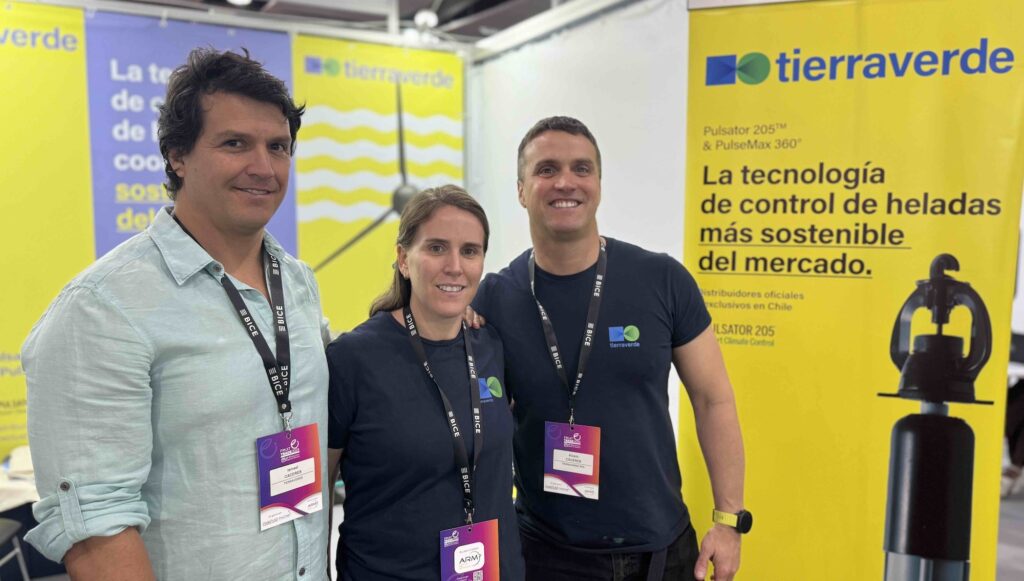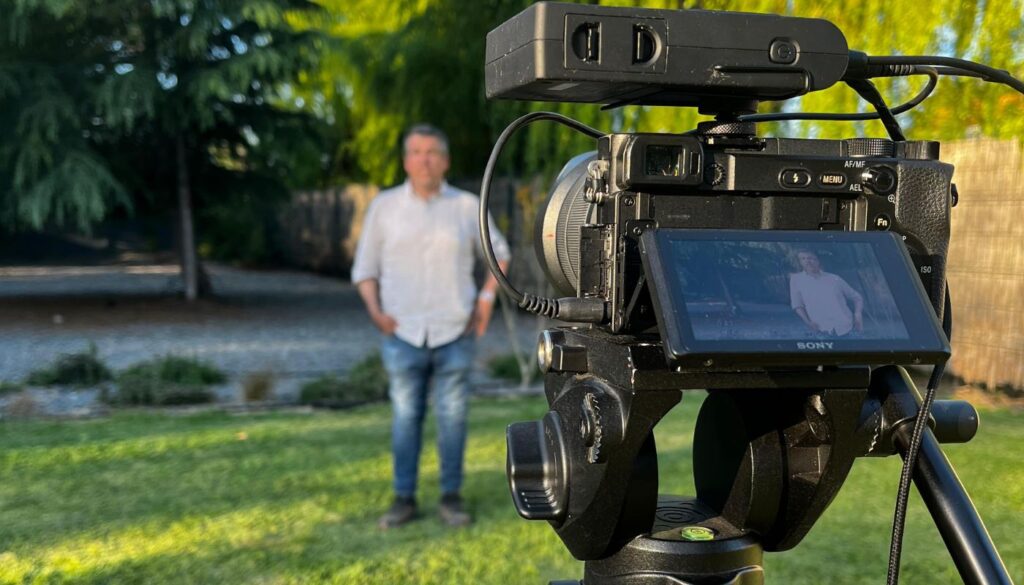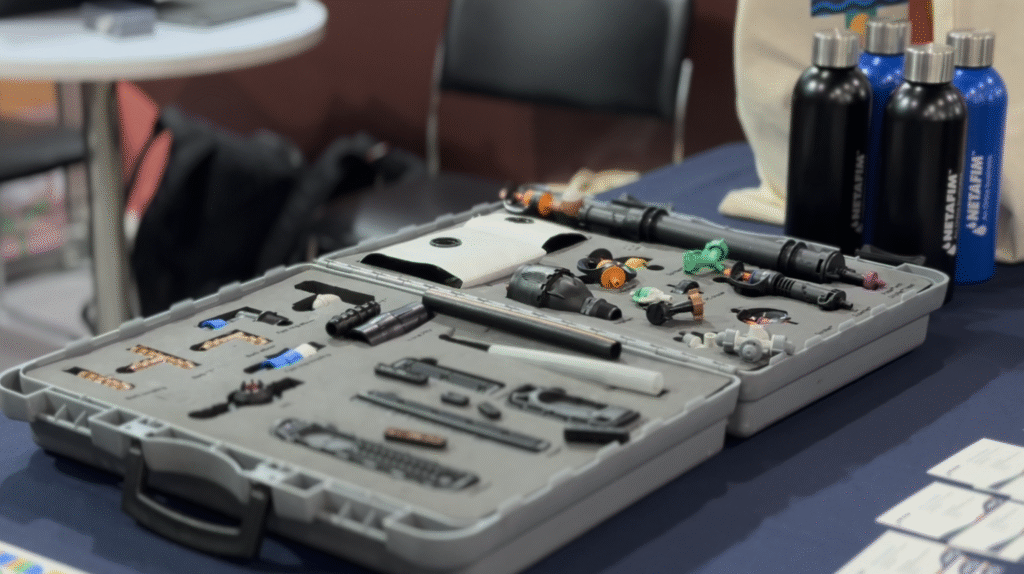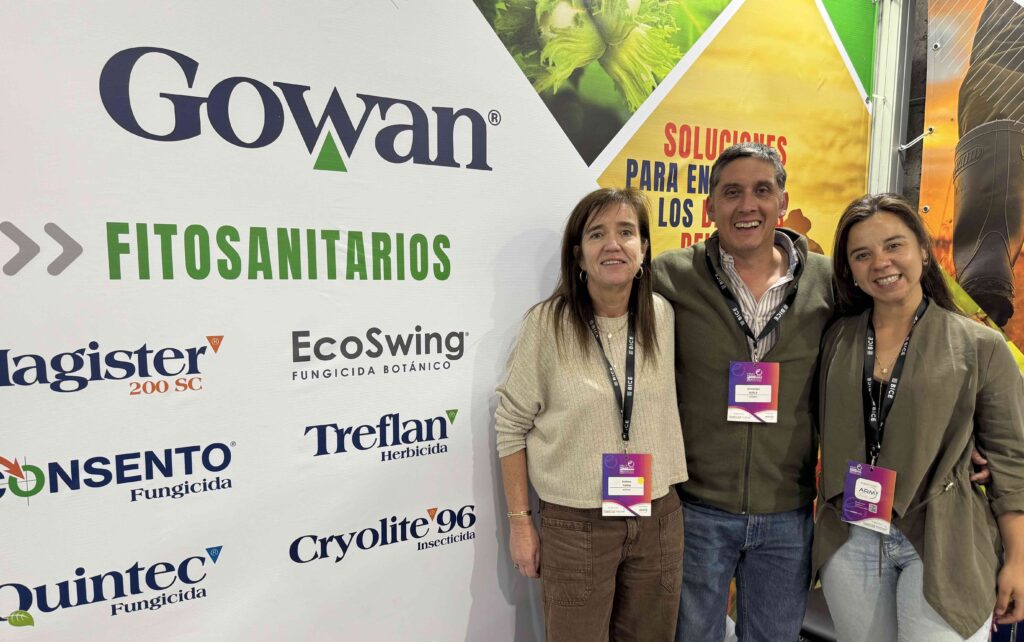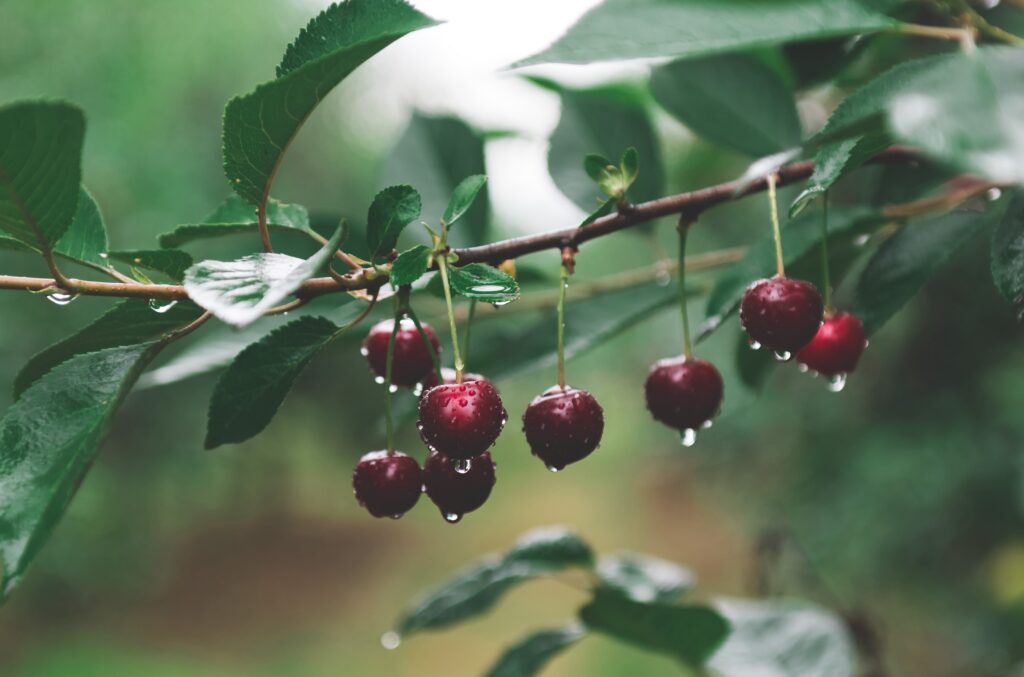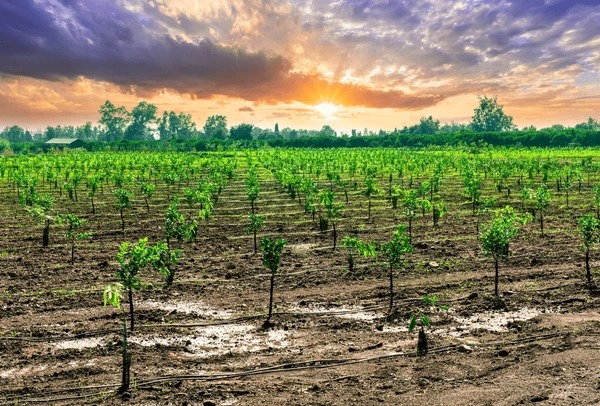Use of foliar application products.
Dose per concentration or minimum dose per hectare?
(Author: Raúl Osorio, Director of Peulla Consulting and Services)
The cultivation of cherries in Chile reaches 50,000 hectares planted (Fruit Registry September 2021), being the most cultivated crop followed by Walnuts and Table Vines. The crop is distributed from the Coquimbo region to the Aysén region, concentrating the largest planted area between the RM and the Maule region (80% Source: Area planted with cherry trees in Chile).
One of the objectives and challenges of the various cherry plantation projects is to achieve an efficient harvest for both the producer and the available labor force. It is estimated that about 75% of the orchards are on a system of traditional central axis orchards with densities between 800 and 1000 plants per hectare (Source: Carlos Tapia, The importance of establishing modern orchards according to labor requirements). The same author indicates the need to seek training and management systems for smaller orchards, obtaining a high productive potential and improving the efficiency of the workforce at the time of harvest (a cherry orchard must have a minimum productive potential close to 12 tons per hectare, (Analysis of the processes of formation and vigor control in modern cherry orchards).

In a “standard” cherry orchard management program, a total of 20 to 25 applications are made during the season depending on the variety, agroclimatic zone, and the presence and pressure of diseases and pests.

These programs should always consider the manufacturers' recommendations, considering that the product labels contain all the information necessary to use them safely and responsibly (Keys to anti-resistance management in fungicides), and they mark the technical and legal recommendations to achieve the biological result we expect. It is very important to respect the indicated concentrations or doses, volume of application (wetting) to achieve good coverage and maximum number of applications per season. It is also important as a technical and exporting sector to protect our production and ensure the quality and condition of our product upon arrival at its destination.
In previous posts, we have provided calculation guidelines for developing more effective applications in terms of the volumes of water that should be used for them (Considerations for preharvest applications of cherries).

Considering that in general we find a crop that has a maximum height of 3.2 meters in height, with an average width of 3.0 meters, it can be indicated that the CORRECT volumes of water required at the different stages of the crop range between:
1.- Leaf fall and winter break: between 500 and 750 L/ha

2.- Flowering at the beginning of fruit set: 750 to 1,000 L/ha

3.- Preharvest setting: 1,000 to 1,200 L/ha

4.- Exceptions: wood pest problems (e.g. St. Joseph scale) and spider mite control, minimum 1,500 to 2,000 L/ha.
Along with the volume of water needed to transport the applications, we need an air flow rate to transport the drops to the different crop structures. This volume can vary from 15,000 to 25,000 m3 of air.
The forward speeds of the applications to achieve the necessary volume of water and air fluctuate between 5.5 and 7.0 km/hour. This range of forward speeds will depend mainly on the availability of tractor-atomizer equipment available, distances between rows and the objective of the application.
Once we have determined the volume of application required by our crop according to its development stage (water and air), and with our equipment in good condition and properly calibrated, we face the dosage of the products to be applied.

Product dosages indicate a dose per concentration or so many cc/100 L of water and sometimes a minimum dose per ha. Also, each of the available labels always indicates the volume of water recommended or suggested for the use of the commercial product.
For example, we have the case of 3 products based on Lambda-cyhalothrin; the recommendations are:

Another example is the case of 3 products based on Fenhexamide; the recommendations are:

For the examples indicated, 2 of the 3 suggest or recommend higher application volumes (1500 to 2000 L/ha).
One of the key aspects in the fight against pests and diseases is to always obtain the largest deposit of the active ingredients contained in the formulations, always avoiding losses, drift or runoff into the soil or structures where they will have no effect.
If we develop applications by adjusting the volumes of water needed to transport the products to our crops, in many cases we will use a volume of water lower than that recommended on the label.
From this analysis arises the question of this article: Dose per concentration or minimum dose per hectare?
We are also very certain that the evolution of application technologies: low-volume equipment, electrostatic equipment, anti-drift nozzles, drones, among others, have introduced this concern for the productive and export sector, generating very effective and efficient applications by determining lower application volumes for each stage of development.
In addition to the above, we find that each year fruit producers must develop and approve export protocols such as Global GAP, Tesco, Rainforest, among others.
We have a pleasant invitation to fruit growing input companies, advisors, universities and research institutes: Add to your recommendations the new and better application technologies to make the available tools increasingly more effective and contribute to the efficient use of available resources that are increasingly scarce (water).
In order to develop effective and efficient application management plans, we must have previously diagnosed equipment in all its components, repaired and replaced its critical elements, perform annual and periodic maintenance, permanent cleaning and have highly trained personnel to develop the applications that will translate into the success of our crop at harvest with the least impact on the environment and people.
Raul Osorio
Director



